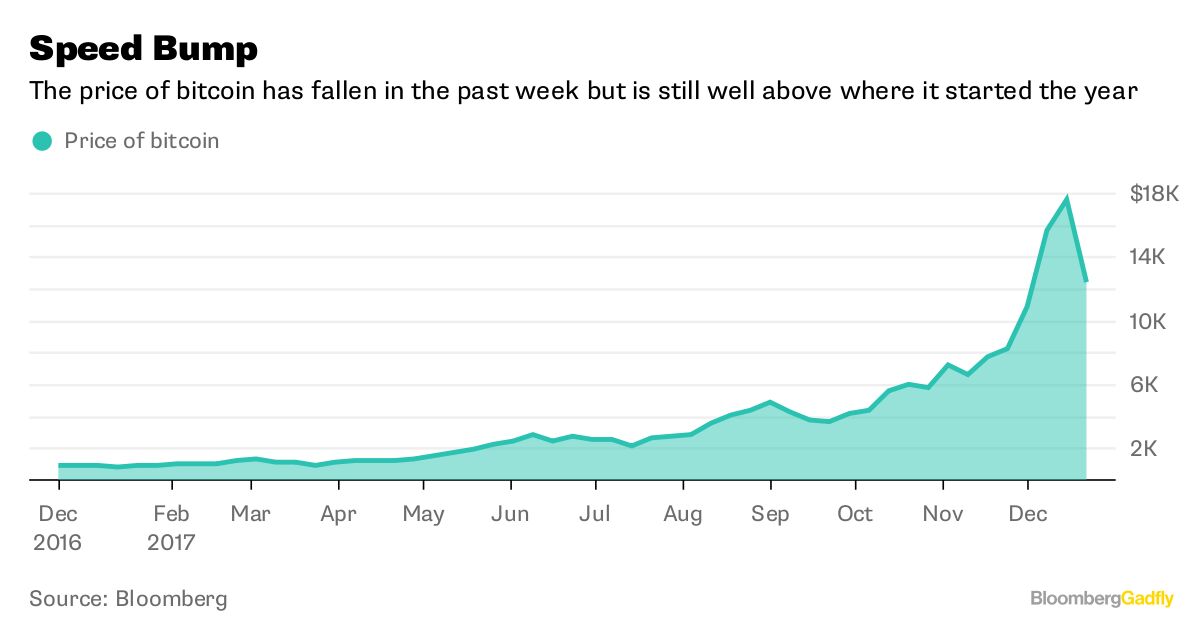This one factor could tell how far Bitcoin will plunge
While the sharp drop in bitcoin — 25 percent, or nearly $4,000, overnight (and 33 percent from the beginning of the week) — has some predicting the bubble is starting to burst, it may also provide evidence of the cryptocurrency’s longevity.

The critical issue is transactions. And if you are looking for where the bottom could be to bitcoin’s plunge, that’s a pretty good place to start. Tom Lee, one of Wall Street’s biggest bitcoin bulls and head of research at Fundstrat, said on Bloomberg TV on Friday morning that anyone who says bitcoin is based on nothing hasn’t “done their homework.” The increase in bitcoin this year has followed an uptick in the value of transactions. At the start of the year, there were $275 million in daily transactions in bitcoin. Earlier this week, that had grown to more than $5 billion. That’s a 1,700 percent increase, which is more than the rise in bitcoin this year, even before its current tumble.
So Lee says the talk about bitcoin not having any intrinsic value — that it’s a bubble based solely on speculation — is bogus. It’s not based on nothing. More people are using it. And if more people are using it, it should be worth more, so the logic goes. In fact, he says, nearly all of the increase in bitcoin’s prices can be attributed to that increase in transactions. The real question is whether those transaction numbers are real or based on something ephemeral themselves.
Bitcoin transactions are supposed to track only the instances when someone uses the digital currency to buy an actual other thing. But there’s debate about whether that’s truly the case. Instead, it’s entirely possible that the huge run-up in the price of bitcoin — and the increase in investor interest in buying and selling it — is what’s driving up the value of transactions, not its use as a medium of exchange. Complicating matters is the recent rise of bitcoin debt or switch cards. Functionally, they allow users to spend bitcoin at any retailer that accepts major credit cards. But the cards swap bitcoin back into dollars before the purchase, so it’s a bitcoin trade and a transaction wrapped up in one.
That’s why the current price dive could be informative about bitcoin. If transactions remain high even as the price of bitcoin drops, then bitcoin might have actually deserved its enormous price rise. If not, then it was a bubble.

The early results are not good. Bitcoin transactions dropped $1.7 billion on Wednesday, according to the most recent available data on cryptocurrency-tracking site blockchain.info. But that’s one day and the number is volatile, and at $3.6 billion it’s still way up from the start of the year. The hope for bitcoin bulls is that, even if its was a bubble, the run-up in price drew in investors who will now become bitcoin users, meaning the digital currency is here to stay.
This column does not necessarily reflect the opinion of Bloomberg LP and its owners.
Stephen Gandel is a Bloomberg Gadfly columnist covering equity markets. He was previously a deputy digital editor for Fortune and an economics blogger at Time. He has also covered finance and the housing market.
This article was originally published on Bloomberg Quint.
Featured image: Pexels

Comments
Post a Comment